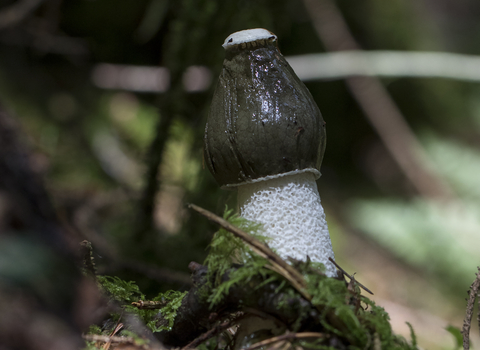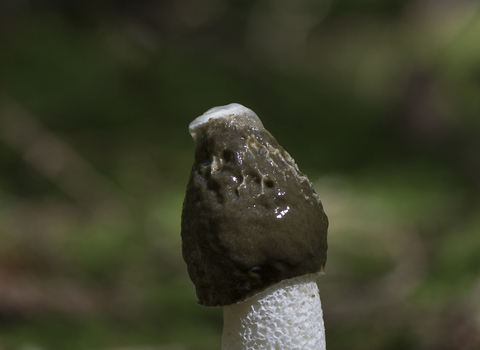
Stinkhorn ©Chris Lawrence

Stinkhorn ©Chris Lawrence
Stinkhorn fungus
The stinkhorn has an unmistakeable and intense stench that has been likened to rotting meat. Its appearance is also very distinctive: a phallic, white, stem-like structure, with a brown, bell-shaped head.
